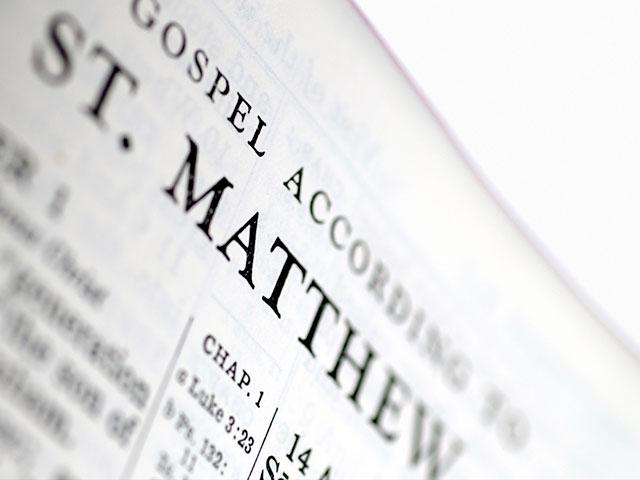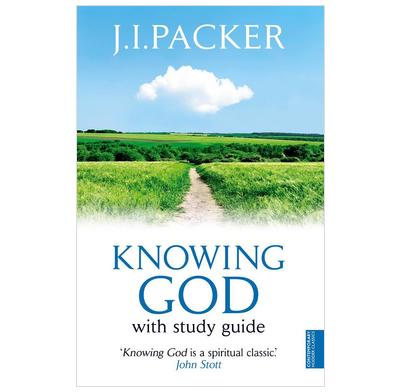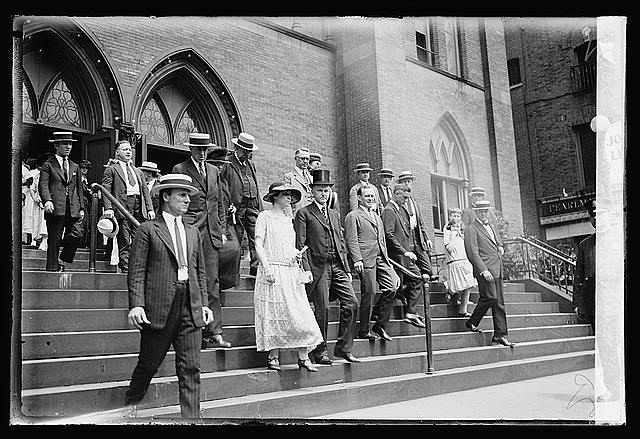
“From every town, village, and little hamlet in England, wherever it may be, there is a road to London… and so from every text in Scripture there is a
road to the metropolis of the Scriptures, that is Christ. Your business is, when you get to a text, to say, ‘Now, what is the road to Christ?’ and then preach a sermon, running along the road towards the great metropolis. “1
Charles Spurgeon thus challenges preachers to regard any part of the Bible as a place from which to preach Christ, including (we presume) Deuteronomy, Job and Jonah.
But how many sermons on Deuteronomy or Job have your heard in evangelical churches, and how many on the gospels, Acts or epistles? A brief survey of sermons published on the web in the UK in the last year suggested that 90% of sermons even in churches that follow a systematic Bible-based programme are based on New Testament texts. So only one in ten sermons is based on over three-quarters of the Bible.
This is not surprising. The gospels especially have a special attraction for Christian preachers who rightly want to “preach Christ”. The Old Testament includes lengthy historical, ethical and prophetic books that are intimidating to most preachers. A preacher may want to preach more Old Testament, but fear the reaction of their congregation if they do. The Old Testament spans a much greater period of history, and therefore raises many more questions of culture and interpretation, than the New. The Old Testament has been on the receiving end of greater criticism of its historical reliability than the New: did Noah’s flood happen, or the Exodus, or Jonah’s escape from the fish, or Job’s suffering? The God of the Old Testament is accused of being violent and moralistic, where Jesus in the New Testament is seen by contrast as merciful and liberating.
Nonetheless I have personally found it deeply enriching to my love of Christ to preach often from the Old Testament, and I believe our congregation have felt the same! In the church of which I became pastor a year ago, we have enjoyed series in Daniel, Ruth, Genesis 12-20 and the early Psalms. Then, having completed a series of seven sermons on Ecclesiastes this autumn prior to Advent (which itself presents so many canonical prophetic opportunities, especially in Isaiah 7-12), we embark upon Exodus 1-18 through New Year and Lent to Easter.
Even so I find we only preached about 30% of sermons this year from Old Testament texts, but it has been a healthy step in the right direction.
The subject of how to preach Christian sermons from the Old Testament is the subject of several great books. But to answer the question why preach more from the Old Testament, here are four reasons:
Jesus and the apostles preach from it.
Jesus came, the Synoptic gospels agree, to proclaim the good news of the kingdom of God. Although it can be debated exactly what that entailed, it seems a good place to start to examine the recorded teaching of Jesus in the same gospels for the detail. Matthew especially is generally agreed to place special emphasis upon Jesus as a teacher/preacher, and to be perhaps a manual for pastors/preachers to follow. So how does Jesus preach according to Matthew? Often by reference to or explanation of the Old Testament, and most clearly in the Sermon on the Mount (chapters 5-7). Here it is that Jesus importantly preaches, “Do not think that I have come to abolish the Law and the prophets: I have come not to abolish them, but to fulfil them” (Matthew 5:17). Jesus interprets the Law in new ways, bringing ‘new wine’ as well as continuity. He does not simply parrot Scripture without explaining its true meaning, but like the apostles in Acts later, Jesus preaches from His “Bible”, the Old Testament.
The gospel is revealed in it.
Paul says that the Scriptures are God-breathed and able to make us wise for salvation (2 Timothy 3:15-16). Jesus says that the Scriptures “testify about me” (John 5:39). Although there is some debate amongst evangelical theologians about how assiduously one should “Look for Christ” in every Old Testament text, it is clear not only that the gospel is in the Old Testament but so is Christ. The rediscovery of Biblical theology as a discipline in the last generation has recovered confidence that the whole Bible points to God’s saving work in Christ. On the road to Emmaus Jesus opens “the Scriptures” (the Old Testament) to his disciples, beginning with Moses and all the prophets to show what they said “concerning himself” (Luke 24:27, 32, 44-45). The gospel pattern of human fall and divine redemption is repeated again and again in Genesis-2 Kings and epitomised in the experiences of the Psalmist, Job and many others. The search for a king and a restored kingdom for God’s people emerges in Samuel and the prophets, and leaves us with the longing for Christ. Adam, Moses, Joshua, David and others act as “types” that prepare us for Him. So preach the Old Testament with Christ as the “prism” (Sinclair B Ferguson’s happy image2) and the gospel will shine from it.
The New Testament is interpreted by it.
Whilst we cannot fully understand the Old Testament without the New, the reverse is also true. What did Jesus mean by claiming in Mark 10 to be the servant of God and ransom for many? Or in John to be the bread of life, good shepherd, and light of the world? If we don’t preach Isaiah and Exodus, just to pick two of the most important Old Testament texts, we will leave New Testament readers in the dark. Peter’s sermon in Acts 2 can easily be shown to interpret the Old Testament in light of the New, but it also does the reverse. The meaning of the Pentecost signs (disciples speaking in languages/tongues) is that Christ has been exalted; and the dramatic events witnessed in his life, death and resurrection are explained in Joel 2. Why is sacrifice, priesthood and atonement so important to the writer of Hebrews? If we don’t preach Leviticus and Deuteronomy we will not really know. So preach the Old Testament and your congregation will have a richer grasp of the New. Not only that…
The gospel is impoverished without it.
It was the early church teacher Marcion who tried to argue that Christianity does not need the Old Testament, and that attempt to cut loose from Scripture’s moorings found sinister embodiment last century in Hitler’s anti-Semitic ideology. Modern versions of Marcionism write off the Old Testament as portraying God as immoral and vindictive. So why can’t we just carry a New Testament in our pocket and do away with the Old?
The answer? Because so many examples from the Old Testament highlight both the depths of human depravity and the heights of God’s grace that preaching them adds colour and beauty to the gospel of Christ. What does the fulfilment of a promise mean to us if we don’t appreciate what the promise was? How much more can we worship Christ as the antitype of Old Testament types if we preach those types and their fulfilment? How can we rejoice that men and women of faith such as Abraham, Moses and Rahab are justified and sanctified along with us by faith in the promised Saviour, as Romans 4 and Hebrews 11 tell us? The Old Testament gives us so many sparkling jewels that adorn the gospel’s crown and without which it loses its lustre.
Brothers and sisters, let’s preach the Old Testament, and through it the gospel about Christ, and we will see God’s people become more wise for salvation.
Footnotes
1 C. H. Spurgeon, in a sermon entitled “Christ Precious to Believers” in “The New Metropolitan Tabernacle Pulpit”(Grand Rapids: Baker Book House, 1994 reprint).
2 Sinclair B Ferguson, “Preaching Christ from the Old Testament” , in Part 4
Further reading
Bryan Chappell, “A Redemptive Approach to Preaching”, in his “Christ-centred Preaching” (Baker Books, 1994)
Ed Clowney, “Preaching Christ in All of Scripture” (Crossway, 2003)
J. Ligon Duncan III, “Preaching Christ from the Old Testament”, in “Preaching the Cross”, Eds Mark Dever, J. Ligon Duncan III, R. Albert Mohler Jr, C.J. Mahaney (Crossway, 2007)
Sinclair B. Ferguson Preaching Christ from the Old Testament , (in ten parts), August 2014
Sidney Greidanus, “Preaching Christ from the Old Testament” (Wm. B. Eerdmans, 1999)
R. Albert Mohler Jr, “Studying the Scriptures and Finding Jesus (John 5:31-47), in “The Scriptures Testify About Me: Jesus and the Gospel in the Old Testament”, Ed. D.A. Carson (Crossway, 2013)
Alec Motyer, “Look to the Rock” (IVP, 1996)

 the philosophy behind a pastor having a collection of ten “first” books to give or recommend to a young Christian, for which credit goes to Tim Keller’s ‘Redeemer’ Church in Manhattan. I also suggested which ten I would have on that “first read these” book table.
the philosophy behind a pastor having a collection of ten “first” books to give or recommend to a young Christian, for which credit goes to Tim Keller’s ‘Redeemer’ Church in Manhattan. I also suggested which ten I would have on that “first read these” book table.


 servant. He intercedes for us, teaches us, and equips us to serve Him.
servant. He intercedes for us, teaches us, and equips us to serve Him.

